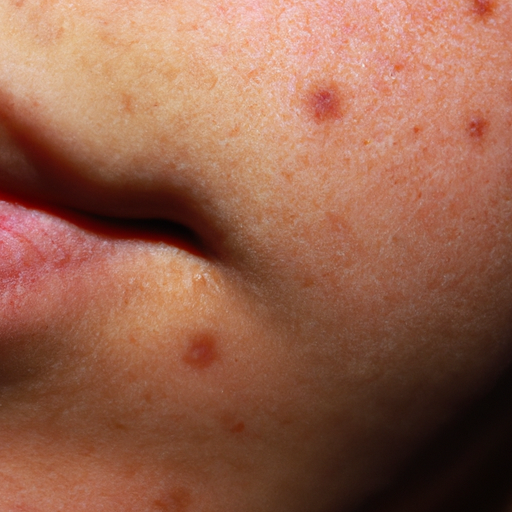Title: Unmasking Acne: A Dermatologist’s Guide to Diagnosis and Effective Treatment Strategies
As a dermatologist, I often encounter patients struggling with acne, a common skin condition that affects millions worldwide. Acne can be distressing and persistently challenging to deal with, but understanding its causes and treatment strategies can help manage this condition effectively.
Acne is primarily caused by the overproduction of oil, clogged pores, bacteria, and inflammation. It typically appears on the face, forehead, chest, upper back, and shoulders because these areas have the most oil glands. Factors such as hormones, certain medications, diet, and stress can also contribute to its development.
Diagnosing acne is usually straightforward. As a dermatologist, I look for the presence of whiteheads, blackheads, and various kinds of pimples on the skin. However, it’s crucial to differentiate acne from other skin conditions that resemble it, such as rosacea or folliculitis.
Once diagnosed, the next step is determining the severity of acne. Mild acne can be treated with over-the-counter products containing salicylic acid or benzoyl peroxide. Moderate to severe acne, characterized by numerous or painful nodules and cysts, may require prescription medications.
Topical treatments are often the first line of defense against acne. These include retinoids, antibiotics, or dapsone. Retinoids work by reducing the production of sebum and promoting rapid turnover of skin cells. Antibiotics and dapsone target inflammation and bacterial growth.
Oral medications are typically reserved for more severe cases of acne. These may include oral antibiotics to reduce bacteria and fight inflammation, combined oral contraceptives for women suffering from acne due to hormonal imbalances, or anti-androgen agents that limit the body’s production of androgens (male hormones) that can contribute to acne.
For deep cysts, antibiotics may not be enough. In such cases, a dermatologist might suggest a drug called isotretinoin. It’s a potent medication that targets all causes of acne. However, it has significant side effects and is used under strict medical supervision.
In-office procedures can also be beneficial in treating acne. Light therapy, chemical peels, and corticosteroid injections are some options available. These treatments can help reduce inflammation, kill acne-causing bacteria, and speed up the healing process.
While medical treatments are essential, lifestyle changes can also significantly impact acne management. A balanced diet, regular exercise, adequate sleep, and good skincare hygiene are crucial components of an effective acne treatment strategy.
Remember, each person’s skin is unique, and what works for one may not work for another. Therefore, it’s essential to consult with a dermatologist to create a personalized treatment plan.
In conclusion, while acne can be a persistent and frustrating condition, understanding its causes, diagnosis methods, and effective treatment strategies can lead to clearer, healthier skin. As a dermatologist, my goal is to guide you through this journey and help you unmask the path to acne-free skin.
Keywords: Dermatologist, Acne, Diagnosis, Treatment Strategies, Skin Condition, Retinoids, Antibiotics, Isotretinoin, Lifestyle Changes.


